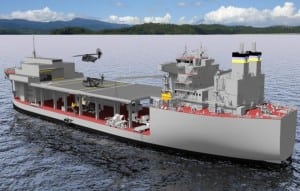
Navy Secretary Ray Mabus believes that the service’s plans to deploy four afloat staging bases along with small high speed vessels for quickly ferrying troops and supplies will have a significant impact on the way the Navy conducts future operations. “Those ships (the Afloat Forward Staging Bases) and the Joint High Speed Vessels … are helping with modularity in the fleet,” Mabus said at the American Society of Naval Engineers conference outside Washington on Friday. “But it’s also helping change…













